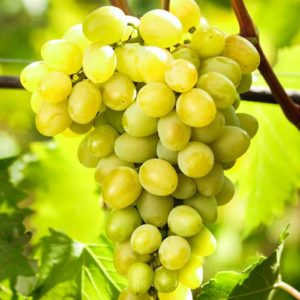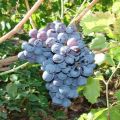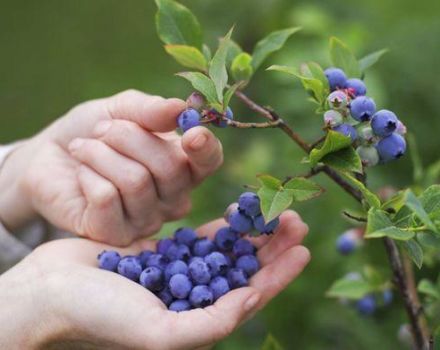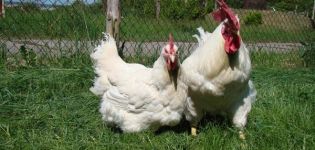Description of the grape variety Transformation and characteristics of ripening terms
Modern gardening is characterized by a variety of varieties of fruit and berry crops. Choosing one of them for planting at a summer cottage is a difficult task. The shrub must meet the stated requirements, bring a regular and sweet harvest. Thanks to the numerous advantages, the Transfiguration grapes will satisfy even the most demanding gardeners. The unpretentious plant is characterized by abundant fruiting. Bunches with large berries ripen early. Frost resistance contributes to the expansion of the geography of cultivation of the popular shrub.
Variety history
The Transformation variety is a fairly new variety of fruit and berry crops. It is not included in the State Register, but it is very popular with many gardeners. The grapes were the result of the work of an amateur breeder Viktor Krainov.
The hybrid form of grapes was obtained by crossing the Talisman and Radiant Kishmish. During the experiments, he bred three varieties similar to each other: Anniversary of Novocherkassk, Victor, Transfiguration. Their distinctive features can only be identified by true professionals in their field. Due to its merits, the Transfiguration has been in demand for many years compared to other horticultural crops.
Description of grapes Transfiguration
The Transfiguration grape is a hybrid variety. Its distinguishing feature is large clusters with large berries.
Due to its special external features, the shrub has become a popular planting in comparison with other horticultural crops.
Description of bushes, shoots, fruits is necessary for the organization of competent care:
- The grape bushes are characterized by rapid and rapid growth. They form many processes. Newly planted cuttings take root quickly.
- The flowers are self-pollinated.
- The shape of the bunches can be varied - conical or cylindrical. In some cases, the clusters are shapeless. The density of the berries is loose. The weight of one bunch ranges from 1 kg to 3 kg.
- The oval, elongated berries are large enough. Grape weight - up to 20 grams. The ripeness of the fruit is evidenced by a pinkish color and a light white bloom.

The formation of "stepchildren" from the mother plant allows you to get a crop twice a season. Sweet bunches are also formed on the processes.
Main characteristics
Based on the external features of the Transfiguration grapes, stable individual characteristics of the variety are formed:
- The variety has excellent taste. The sweet aromatic berries have a slight sour note. The pulp is not juicy, medium density.
- The grape yield is high and abundant. An individual feature is double fruiting: in late August and mid September. With proper care, good environmental conditions, up to 20 kg of ripe berries are harvested from one bush.
- Self-pollination is a useful characteristic for a plant. This way, no additional pollinators are needed nearby.
- High frost resistance. The transformation endures drops in low temperatures down to -23 degrees.
- Fast adaptation to environmental conditions. Grapes adapt easily to climate change.
- Prevention of fungal diseases is important for the variety. Resistance to plant diseases, the influence of parasites in grapes is low.
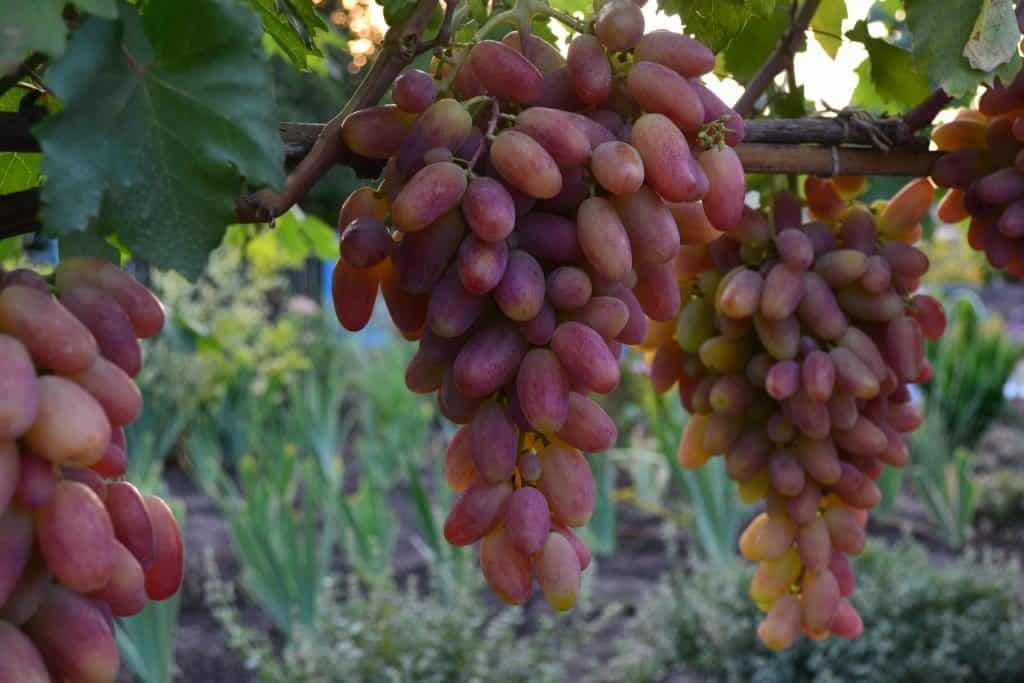
The characteristics of the Transformation determine the landing algorithm, the stages of the necessary care, the methods of prevention.
Pros and cons of the variety
The young variety Preobrazhenie has a number of undeniable advantages. They distinguish it from other berry bushes. Due to its advantageous advantages, it is in great demand among many gardeners:
- Self-pollination ability. Promotes abundant fruiting without assistance.
- Abundant double harvest from large berries.
- Resistant to severe frost. Allows to plant shrubs in the central and northern regions of the country.
- The grapes do not become smaller in case of bad weather conditions, poor-quality soil composition.
- The bunches have excellent transportability without losing their presentation. They can be stored for a long time without sacrificing taste.
- When planting, seedlings quickly and easily take root in new conditions.
- Climate change does not affect plant development.
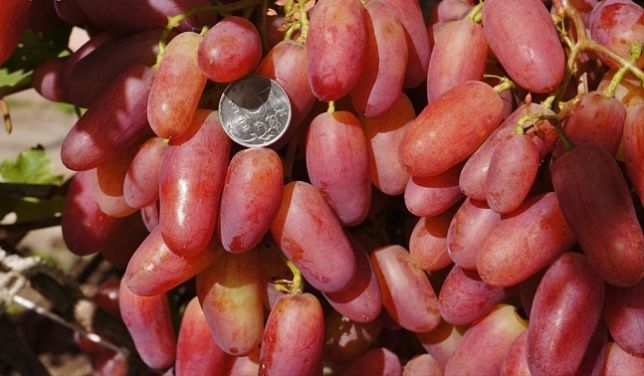
Specific features of the variety are low resistance to fungal diseases. This must be taken into account to prevent the occurrence of lesions. Despite the rather young age, Transfiguration grapes are a worthy option for planting in a summer cottage, conducting commercial gardening. Due to the predominance of positive traits, it is often cultivated in different regions of the country.
Rules for choosing a site for landing
Transfiguration grapes are an unpretentious variety. He is not picky about the composition of the soil, the site for planting. For the organization of competent care, several basic nuances must be observed:
- The plant loves good lighting. When choosing the ideal place to plant it, you should pay attention to the presence of tall trees with a dense crown nearby. They will create artificial shade. This will negatively affect the fruiting of grapes.
- An excellent option for the variety is the southern side of the summer cottage, where there will be no drafts, winds.
- Fruit and berry shrubs do not like excessive moisture. The degree of soil moisture is medium. The groundwater level is not higher than 1.5 m from the surface.
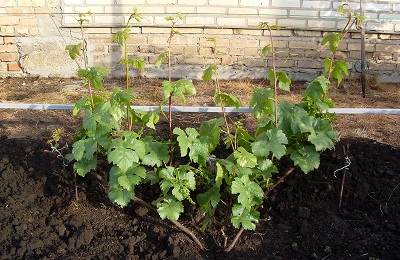
Grapes are recommended to be planted in a proven, pre-prepared area. This will allow organizing the highest quality conditions for plant growth and development.
Landing features
Planting grapes Transformation is best done in spring, with the onset of the first heat. A correctly chosen seedling is the basis for a bountiful harvest of the variety in the future. A young plant must meet several requirements:
- The color of the root system is whitish.
- The cross section color is green.
- No signs of dryness, frostbite.
Before planting in the ground, seedlings undergo primary processing. They are soaked in water for a day. The root system is sprayed with a solution of a growth stimulant.
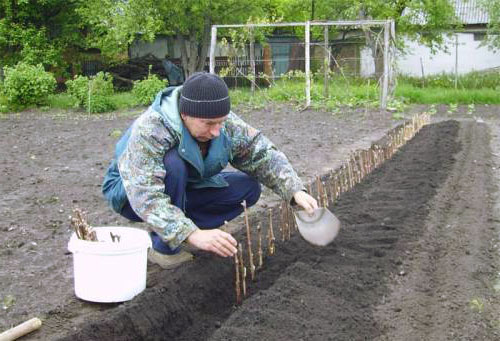
The process of planting a seedling involves a simple sequence:
- Preparation of pits. They should be 2 times larger than the roots of a young plant. The distance between the holes is 1-1.5 m.
- A mixture of soil and organic fertilizers is spread at the bottom. Sprinkle with ordinary earth on top.
- The seedling is lowered down.Its roots should lightly touch the bottom of the hole. The root collar is not below the soil level.
- Sprinkle the planting with the remaining soil. Tamp down slightly.
- If necessary, you should equip an additional support for the plant - a wooden stake dug in next to the seedling.
- After planting, abundant watering is performed. Up to 3 buckets of water are consumed per bush.
Even a novice gardener can cope with planting a grape seedling. A well-executed planting will ensure healthy plant growth.
Ripening terms
The Transfiguration variety is considered early maturing. It ripens in the shortest possible time. After the stage with the opening of the buds, an average of 3-3.5 months pass before the formation of ripe bunches.
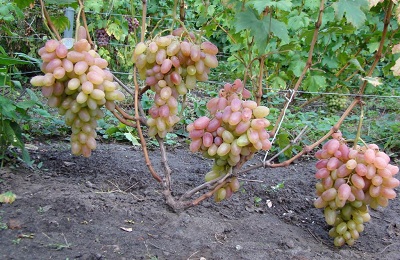
The timing of the appearance of ripe berries depends on weather conditions, the region of grape growing. In favorable climates, the ripening period can be shortened. If the plant is planted in areas with low air temperatures, then the appearance of the first grapes will occur a little later.
Care Tips
Grape Care Transformation is an important component of the full development of a plant. The variety is unpretentious. Correct implementation of standard procedures is the basis for a regular, bountiful harvest:
- Watering should be timely and moderate. The variety prefers moist soil. The main thing is to avoid excessive moisture. Abundant watering is recommended at the beginning and end of the flowering of the shrub. In a dry season, a circular water hole is dug around the trunk. Good drainage for grapes should be organized.
- Regular fertilization will strengthen the plant's immunity. Top dressing is applied at the beginning of flowering, at the stage of fruit formation, before sheltering for the winter. Substances containing potassium, magnesium, phosphorus will have a beneficial effect on the shrub.
- Mulching is an important care procedure. Thanks to it, moisture and nutrients remain in the soil for a long time. The trunk of the bush is covered with a layer of peat or humus in a circle. Held in spring, autumn. Required before the onset of cold weather.
- The plant is pruned before the vine opens up. The best period is autumn or spring. The fan-shaped method is perfect. After its application, the fruit vines are shortened by 6-8 eyes. Only 24-28 shoots are left. The Transfiguration is a high-yielding variety. To avoid overloading the shrub, one bunch is left on one shoot.
- This grape is cold resistant. Additional shelter for the winter will minimize the damage caused to shrubs by low temperatures. Before warming, remove the vine of the plant. Leave 25% of the basic amount. The shrub is bent to the ground, covered with soil. Lay out hay, slate on top.
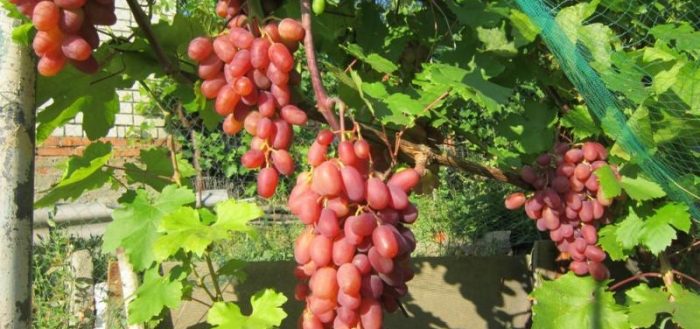
Taking care of the grapes Transformation is not difficult. The correct approach to the plant will reduce the risk of dangerous fungal diseases, damage by insect pests.
Diseases and pests
The Transfiguration variety is susceptible to the influence of insects, plant diseases. Pest control should be carried out in a timely manner, with regular prophylaxis:
- Grape flea. Destroys leaves, laying larvae on their back. They are treated with an insecticide - the opened buds are sprayed.
- Grape cushion. Dwells on shoots. Due to the development of the film, it remains practically invisible. It feeds on plant sap. Resistant to pharmaceutical preparations. Collected by hand.
- Grape moth. The offspring from its larvae gnaws leaves, feeds on juice. The main method of control is insecticide treatment. As a preventive measure, it is necessary to regularly collect fallen leaves, loosen the soil.
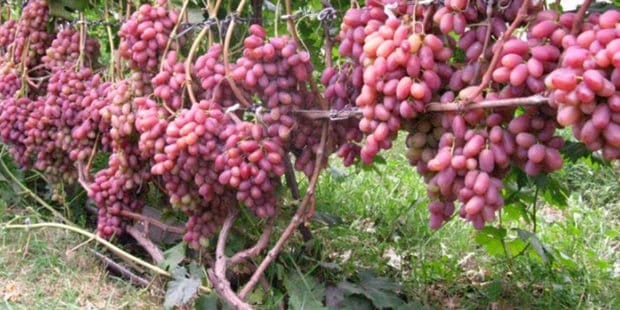
The Transformation variety is affected by some fungal diseases:
- Powdery mildew. Expressed as a white bloom on the leaves. For destruction use fungicides ("Topaz", "Vitaros").
- Bacterial cancer.Occurs after processing shoots with non-sterile instruments. Cannot be treated. The shrub is destroyed.
- Spotted necrosis. It appears in early spring. First, spots form on the leaves. Then the vine dries up completely. For control and prevention, they are sprayed with preparations containing copper.
Timely and thorough examination of the grape bush will allow to avoid the development of many dangerous diseases. Thanks to this, you can notice the defeat at an early stage, which will allow you to perform the appropriate treatment measures.
In which regions is it better to grow?
Grape Transfiguration prefers warmth, light, no wind, fertile soil. A distinctive feature is resistance to low temperatures.
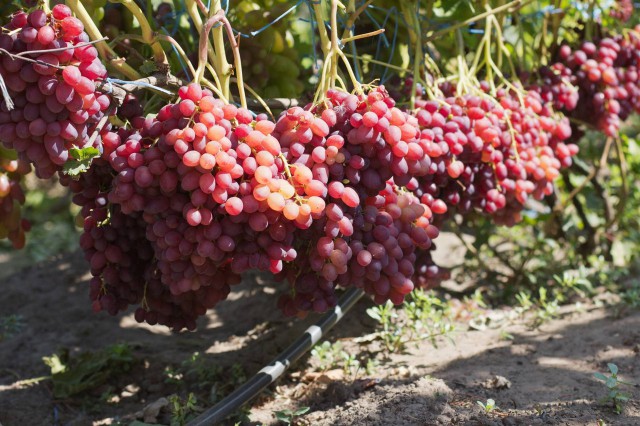
For these reasons, the variety can be cultivated in several regions of the country:
- North Caucasian.
- Nizhnevolzhsky.
- Uralsky.
- Central.
The variety can be grown in a variety of areas. It is enough to create the correct necessary conditions for planting. Correct implementation of care procedures will keep the shrub healthy and fruitful for many years.
The Preobrazhenie variety has long become a popular planting in summer cottages. An unpretentious shrub does not require careful maintenance. Among its many advantages: bountiful harvest, early fruiting, large and sweet berries. A warm, sunny region will be an excellent place to cultivate a plant. Thanks to frost resistance grapes can be planted in places with fluctuating low temperatures. The excellent taste of the fruit made the shrub popular with many gardeners and commercial production.

